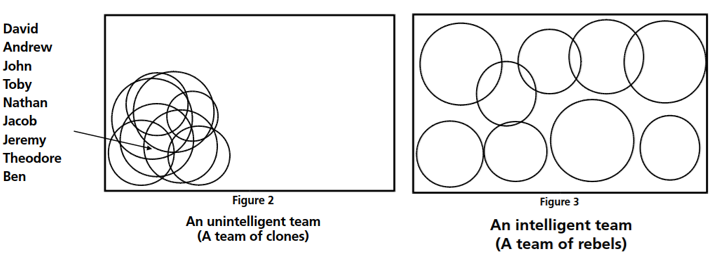The world is in a transitional state; we have Gen-Z entering the workforce, colourful tributes to Pride month across the country and many organisations actively embracing practices to encourage equality, diversity, inclusion and belonging. Be it companies, communities or think tanks we are moving away from the homophily model Boomers were most accustomed to. In the spirit of this shift, our book obsessed Marketing Manager has sunk her teeth into Matthew Syed’s ‘Rebel Ideas: The Power of Diverse Thinking’; a best seller that explores the concept of diversity and why it is the essential ingredient in any group when it comes to problem-solving and driving innovation and creativity.

Matthew Syed: Rebel Ideas: The Power of Diverse Thinking
When it comes to the global reader’s community, this book is everywhere! That vibrant cover has seen the walls of book clubs, the personal development arena and has been featured in various publications. My ‘want to read’ list could easily stretch across the length of the M25 hence I was hesitant about getting around to it…until I joined Bain and Gray! Our boutique recruitment agency takes great pride in continuously improving our EDIB strategy and our committee handed me this recommendation. I did not regret this extraordinary piece of homework, and neither will you! To practice diversity and inclusion, you must understand it and you can always count on an award-winning journalist to beautifully articulate very complex ideas through various fields, personal anecdotes, and fascinating real-life examples.
The Core
One of the most memorable sections of the book describes a study that was conducted by psychologists from the University of Michigan. They invited a group of Americans and a group of Japanese participants to observe video clips of underwater scenes. When asked what they saw, the Americans recalled high levels of detail about the fish whereas the Japanese focused more on the context e.g., the green water, the rocks, the shells, and the possibility that these underwater scenes came from a stream. Is that not interesting? Matthew reminds us that America represents a more individualistic society whilst the Japanese are accustomed to being interdependent. What does that teach us? Different groups will perceive the world around them differently based on their upbringing and conditioning.
The Dangers of Homophily
One thing that certainly stimulates the pleasure centres of our brains is being surrounded by people who are like us and mirror our perspectives. The joys of being validated and having personal prejudices confirmed! The danger of trusting our tunnel vision and confirmation bias Matthew outlines with a series of gripping examples. To not spoil, I am giving two intriguing snippets:
- In his view, the Mount Everest Disaster that took the lives of several world class mountaineers was not the actions of a particular individual, but a strict dominance hierarchy that did not encourage speaking up despite the collective wealth of knowledge within this diverse group. There were opportunities for a more positive outcomes including the presence of a commercial pilot that saw an interesting sign before everyone else.
- Although this theme is the equivalent to opening Pandora’s Box, Matthew claims the CIA counter-terrorism department could have potentially prevented 9-11. You can hire the most intelligent people in the country, but do you not see the problem when you have homogenous backgrounds come together and try to understand the complexities of a culture on the other side of the world? What seemed to them irrelevant (Bin Laden speaking in poetry from a remote cave) would be incredibly alarming to certain intelligence officers who understood the intricate threads of various branches of Islam.

The Beauty of Cognitive Diversity
Think about why we anyone would read a book like this? It is to have a different perspective about the world around us. The same can be achieved when harnessing our own unique perspectives whilst participating in a collective intelligence. In fact, being in a diverse environment has the potential to tackle some of the greatest challenges of our age from climate change to health, to terrorism. Just imagine the possibilities if your company or organisation tweak their traditional recruitment process. Here is some food for thought:
- Have you heard of Boston’s Route 128? Neither did I! See it as Myspace if Silicon Valley is Facebook. What made Silicon Valley wipe them off the map? If all tech innovations connect disparate ideas, minds, concepts, and technologies what exactly is the advantage of keeping employees and tech entrepreneurs shrouded in secrecy behind the walls of Route 128’s organisations? Silicon Valley’s formula of success was the constant mingling of great minds across the area, in coffee shops, clubs and bars. ‘If you have cool technology, it is better to be social than smart’ as a ‘networker’ is statistically better positioned for success than a lone ‘geniuses.
- My personal favourite! An incredible moving tale of de-radicalisation in America’s Deep South. The story of Derek Black and Matthew Stevenson was tear jerkingly beautiful and I will leave it to Matthew to tell it. However, this is a rare example of a human refusing to reduce the other’s humanity (despite both having completely opposite viewpoints on life). In turn, the other needed to confront the humanity of others despite his radical views. It is a story of how the simple gesture of inviting Derek to weekly Shabbat dinner could hold the key to redeem the brokenness in our world.





